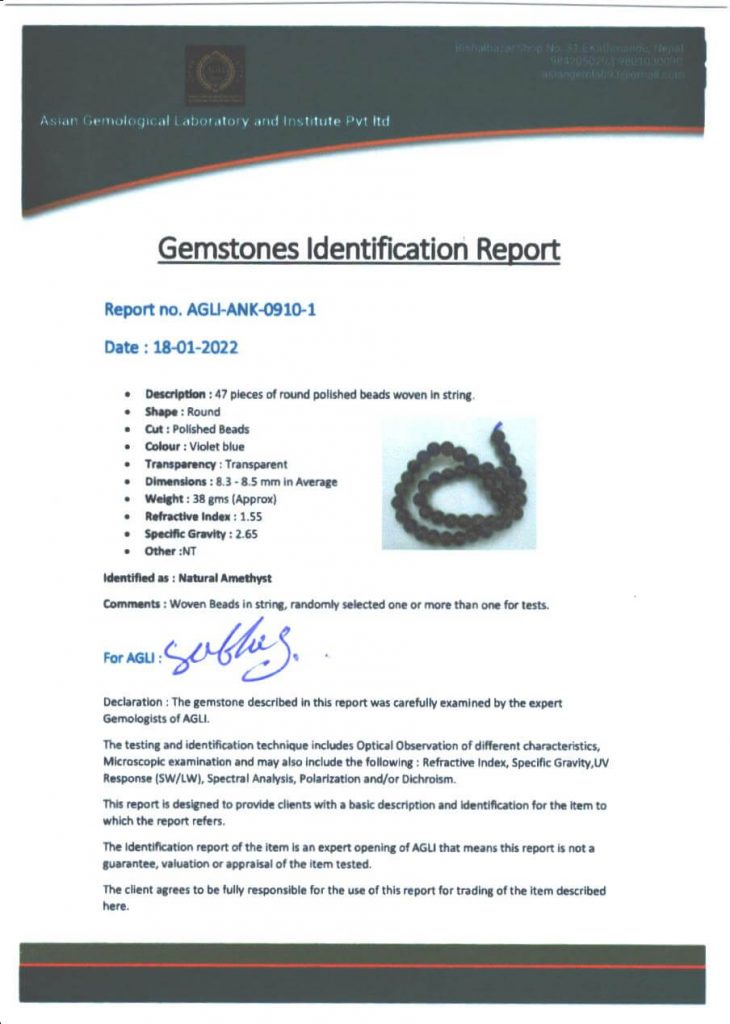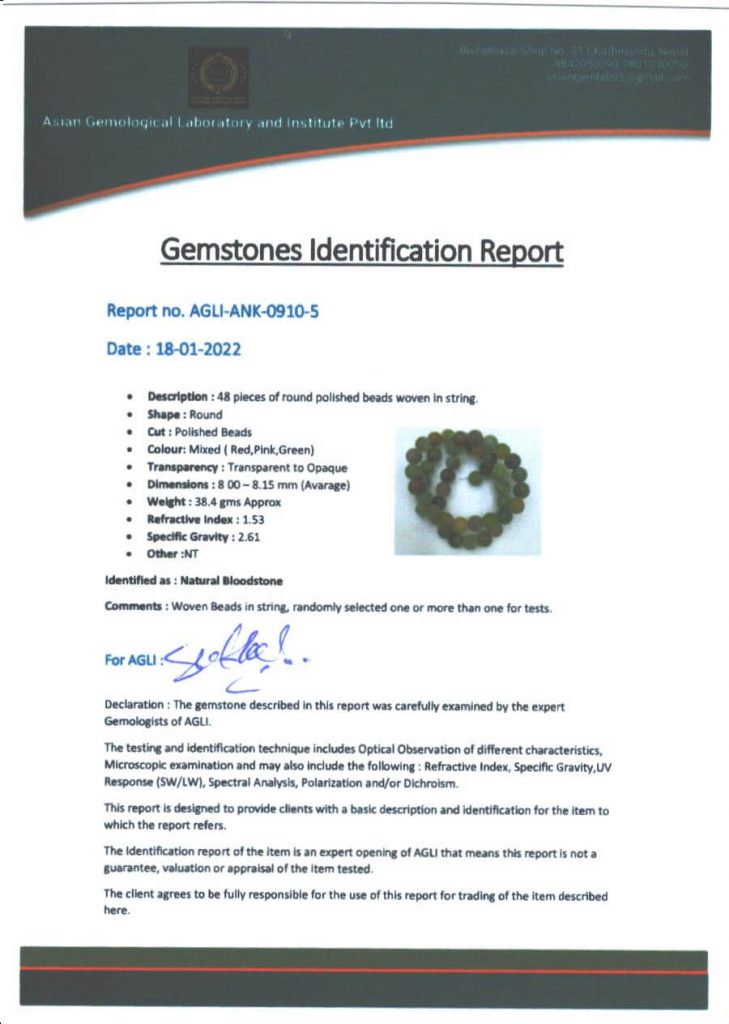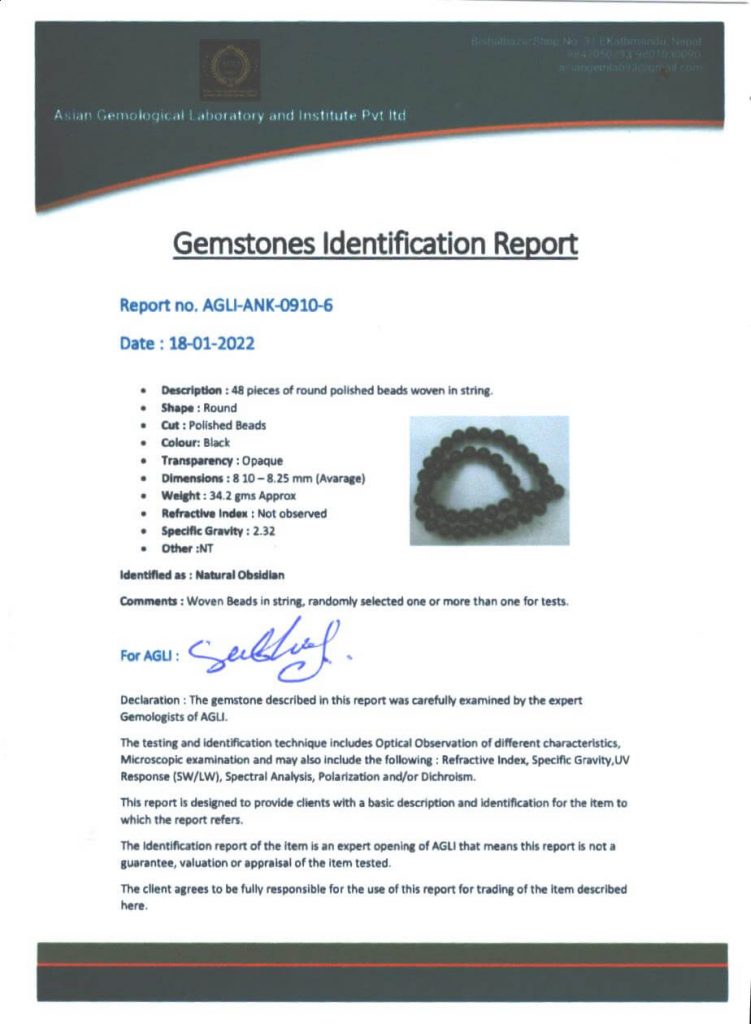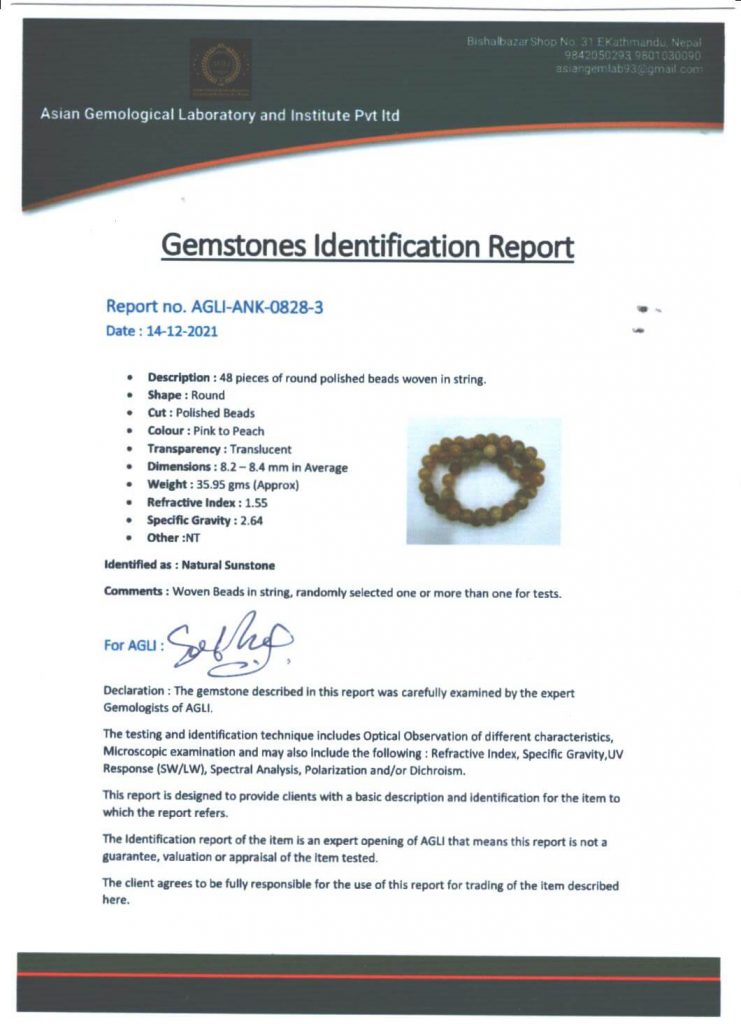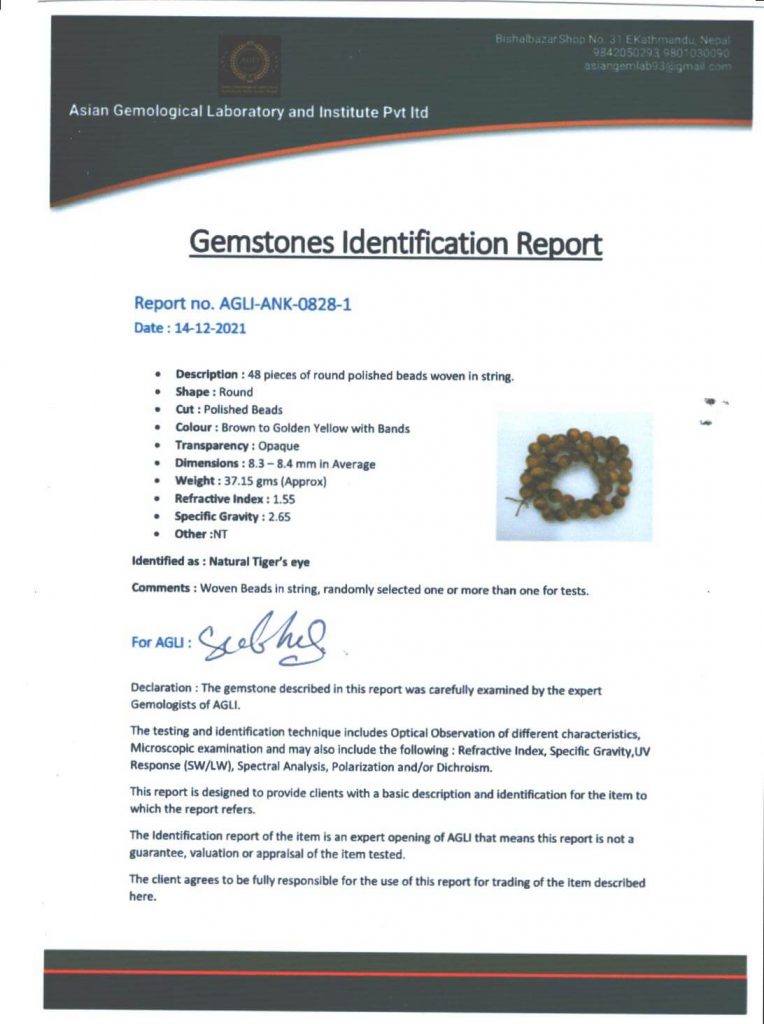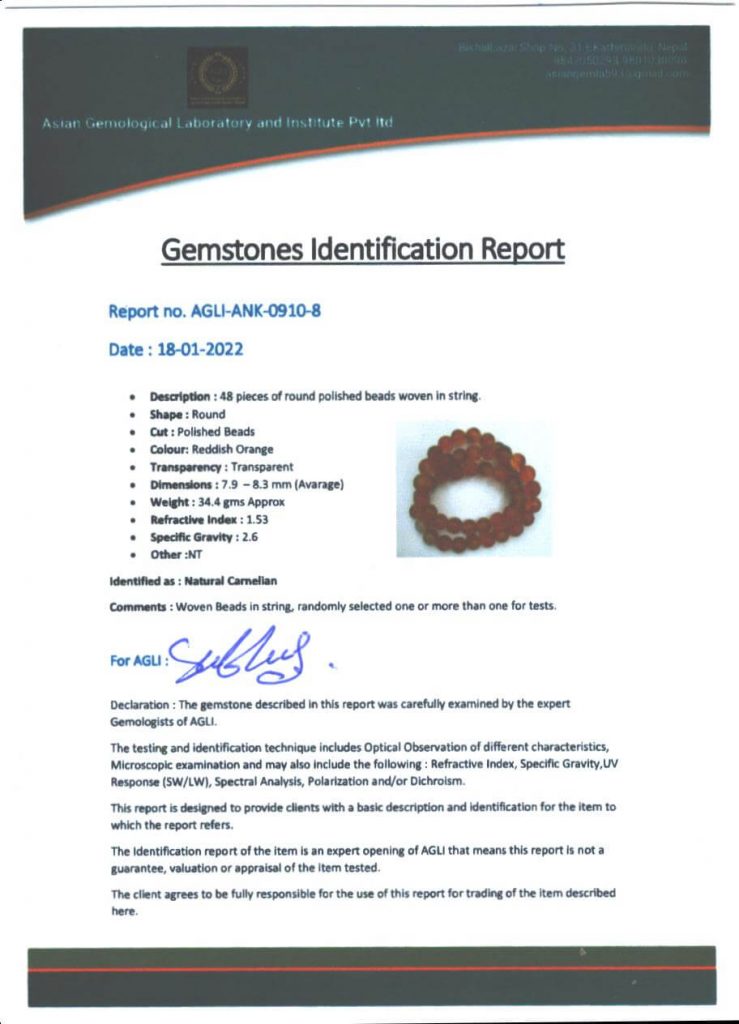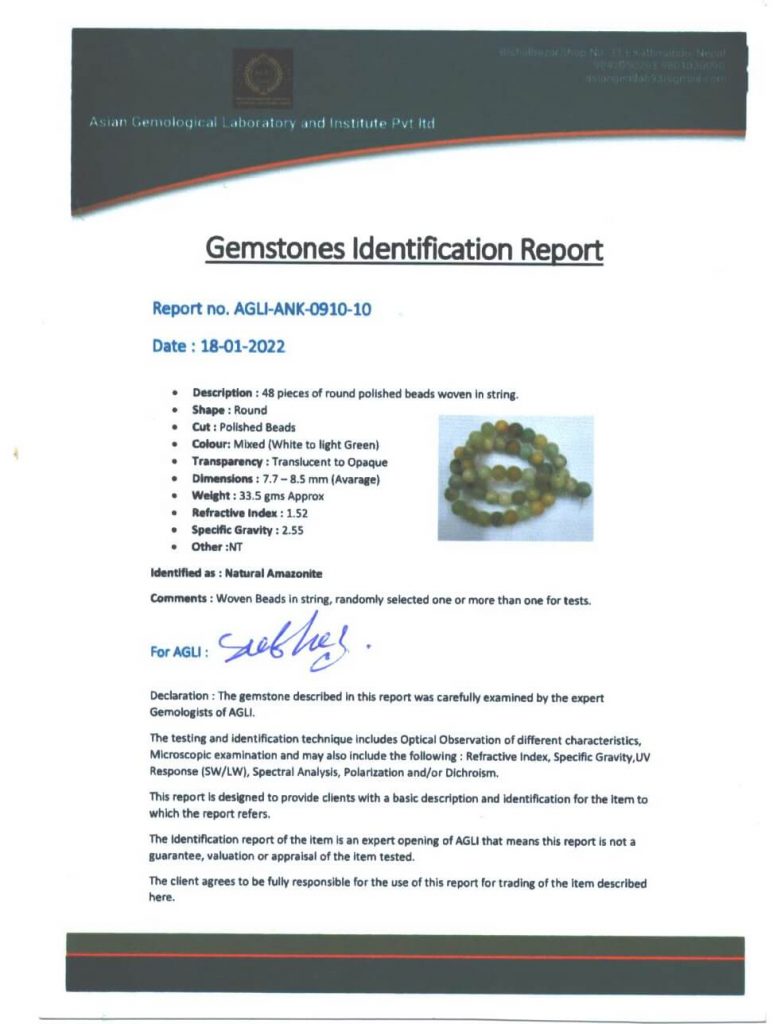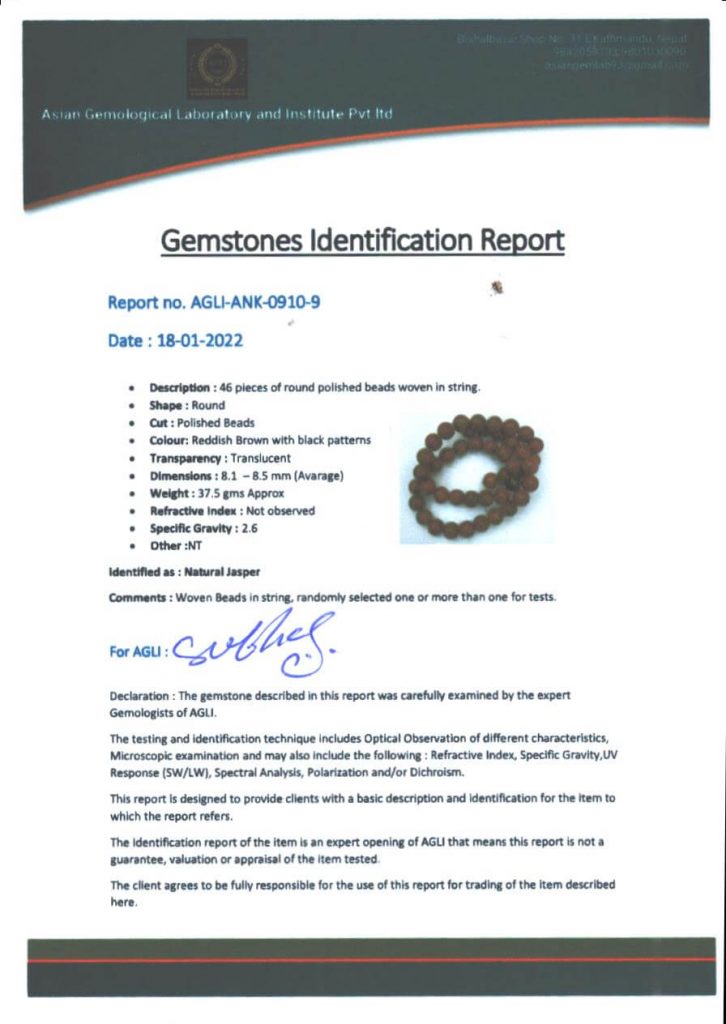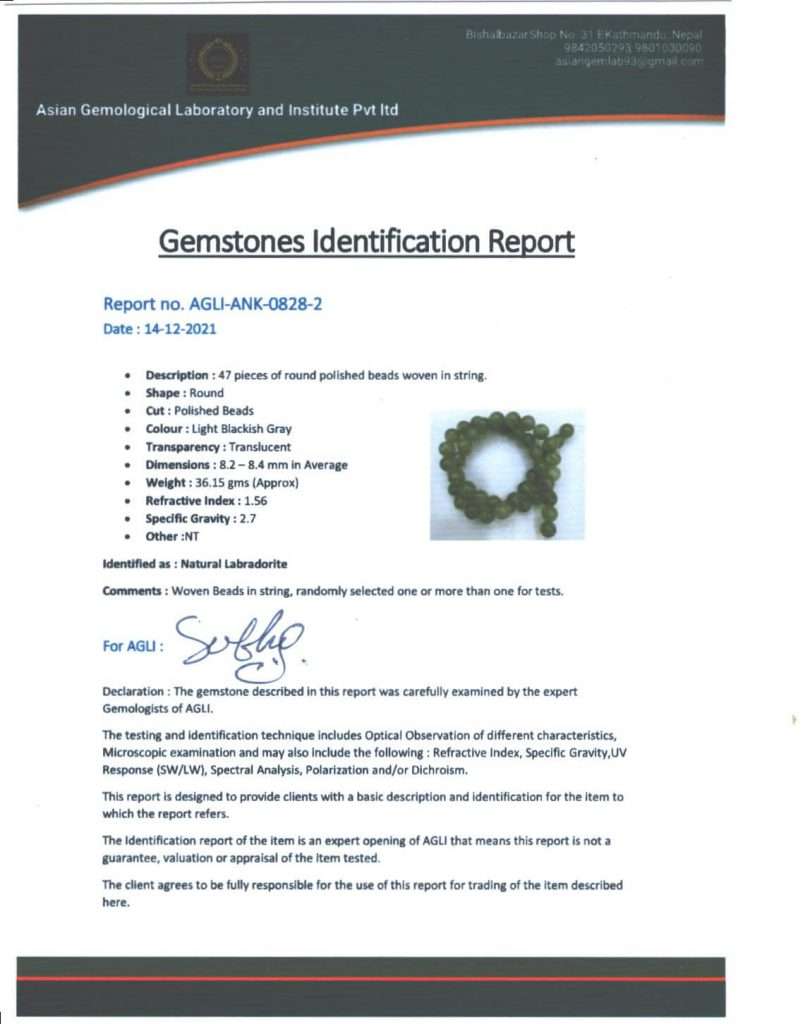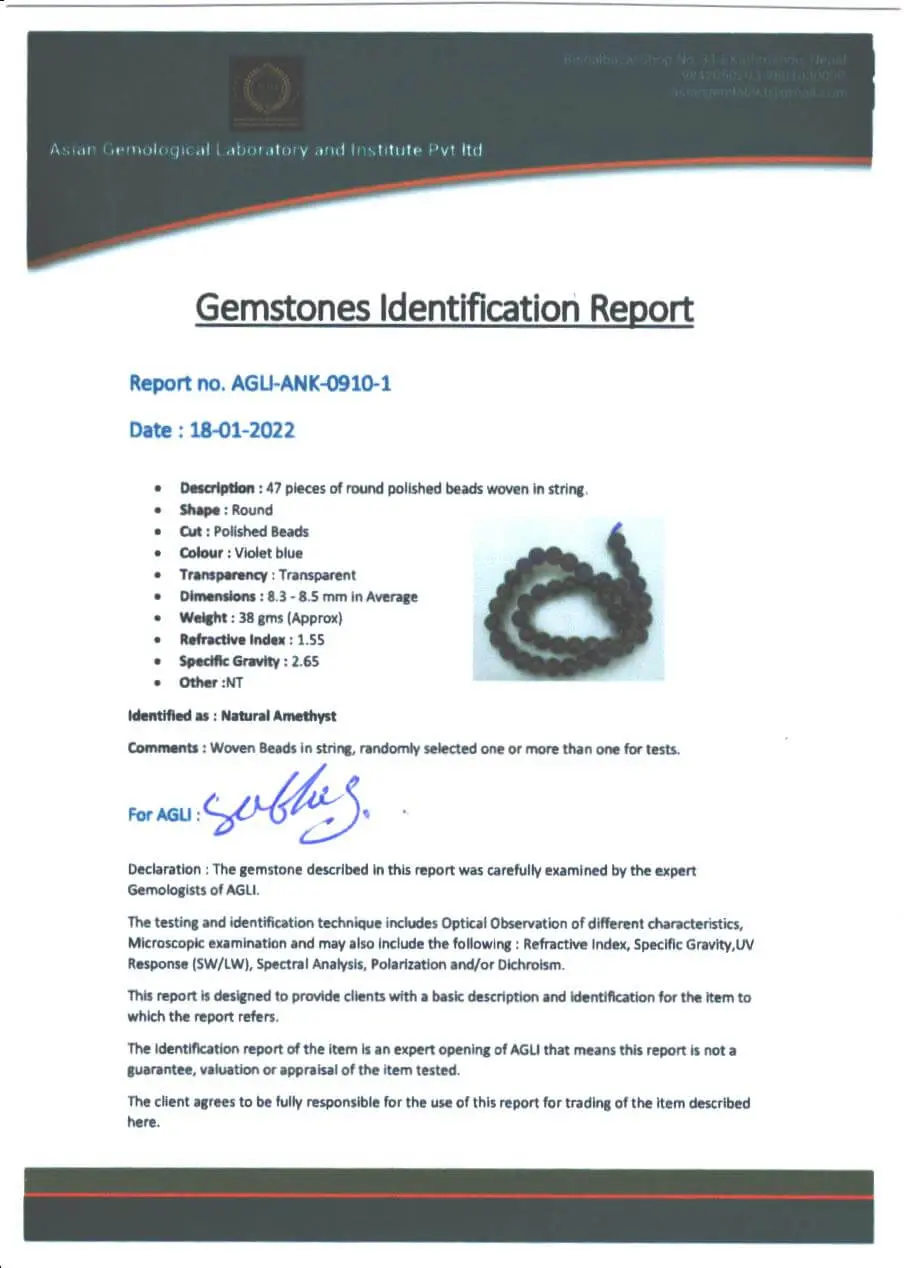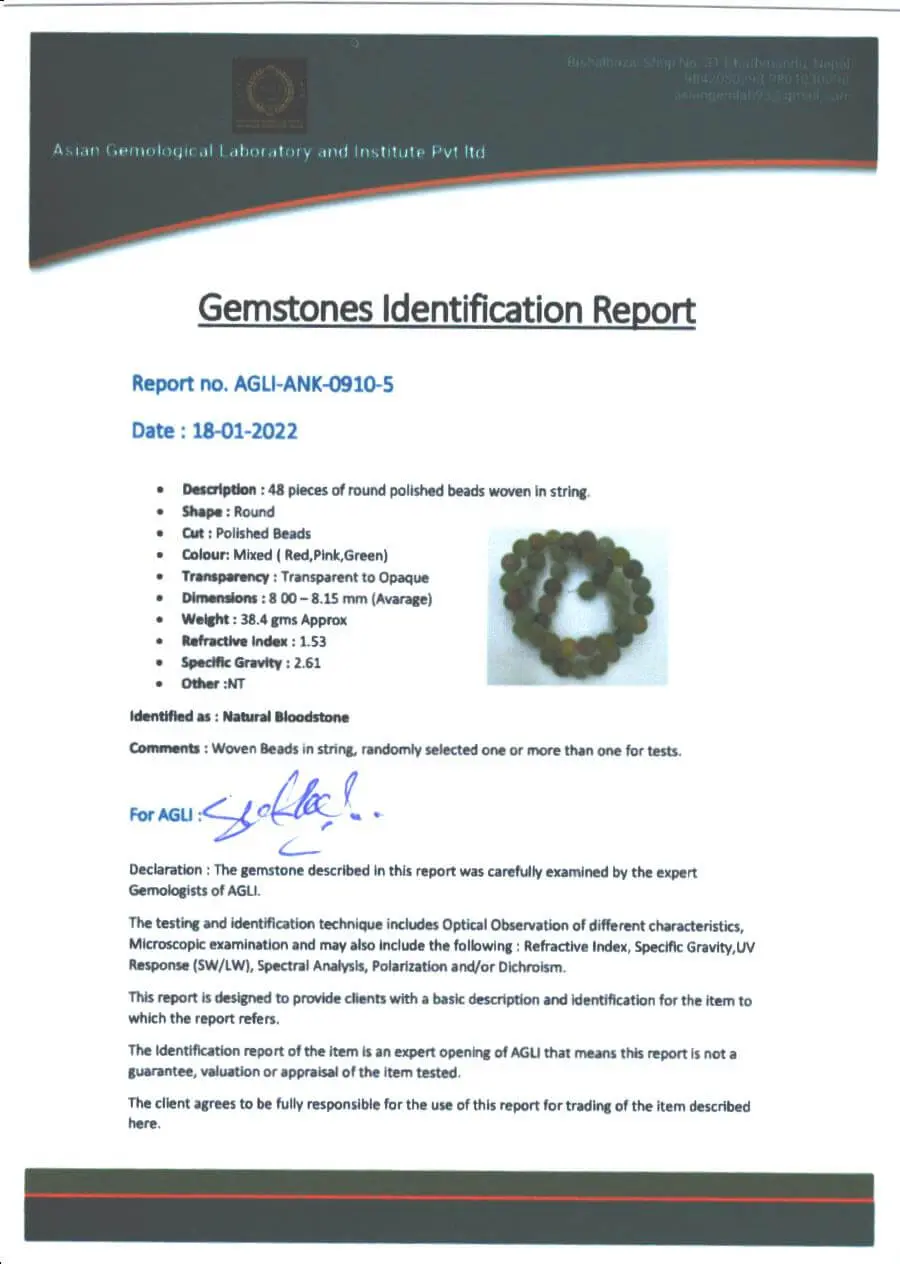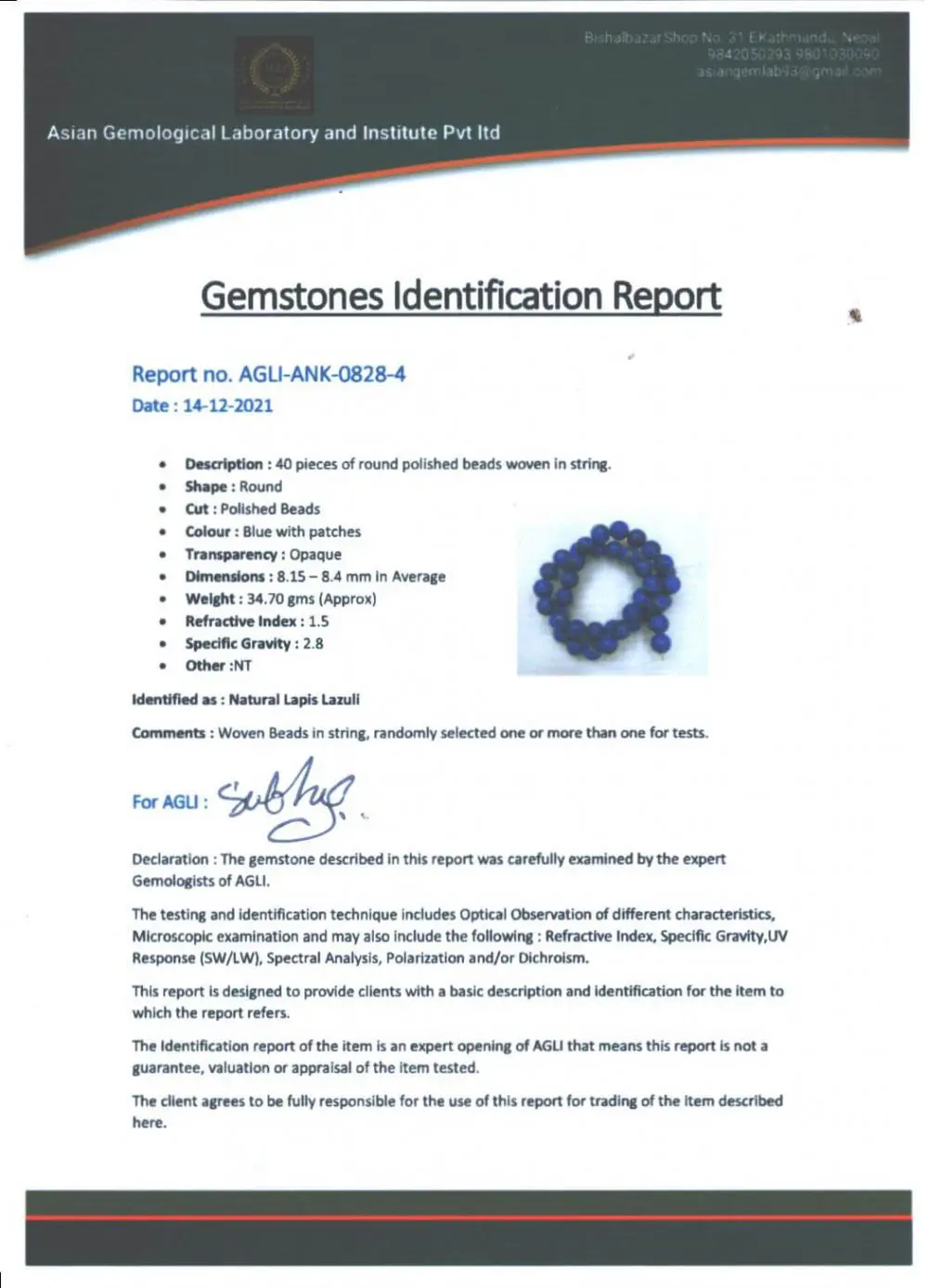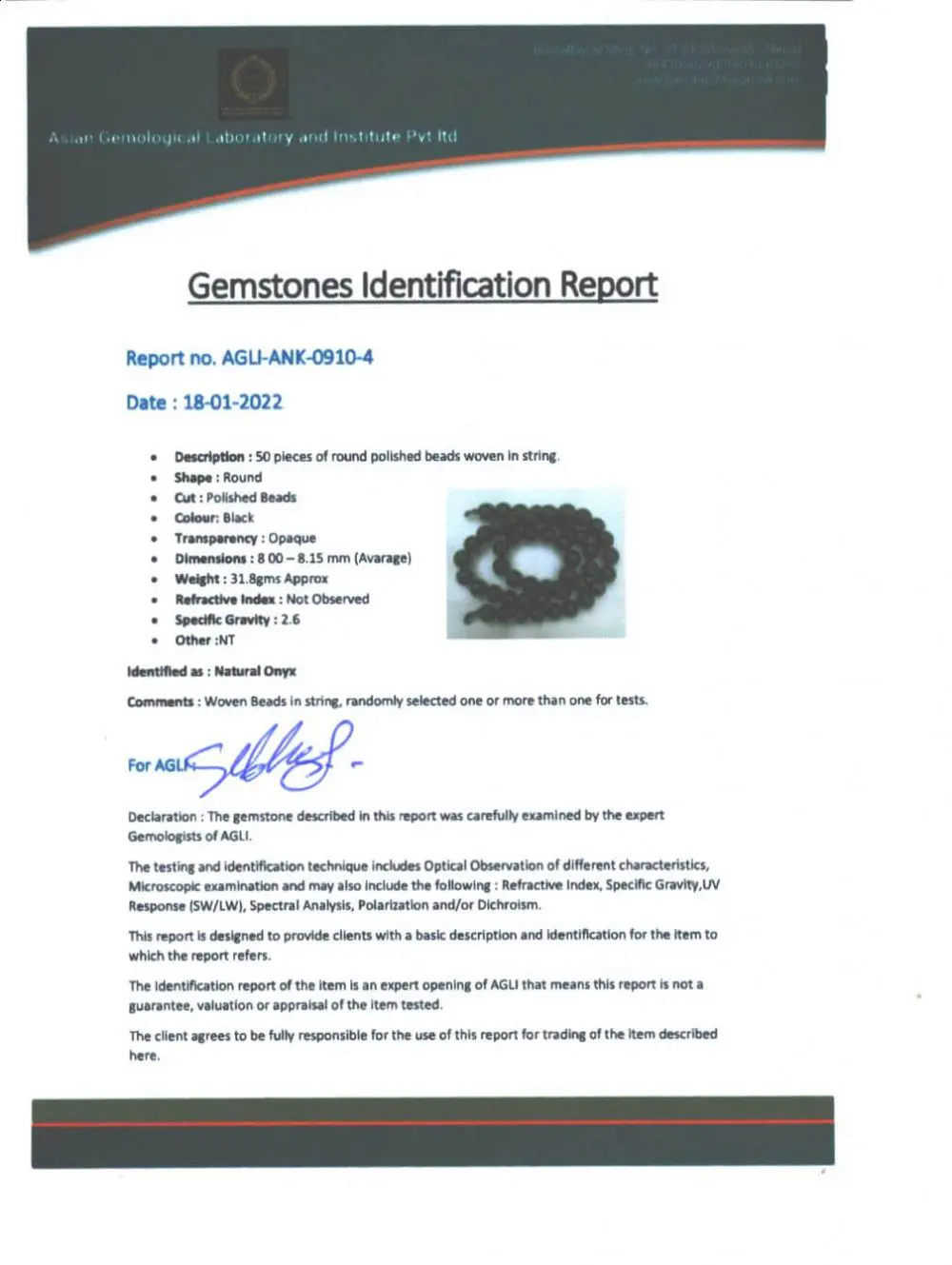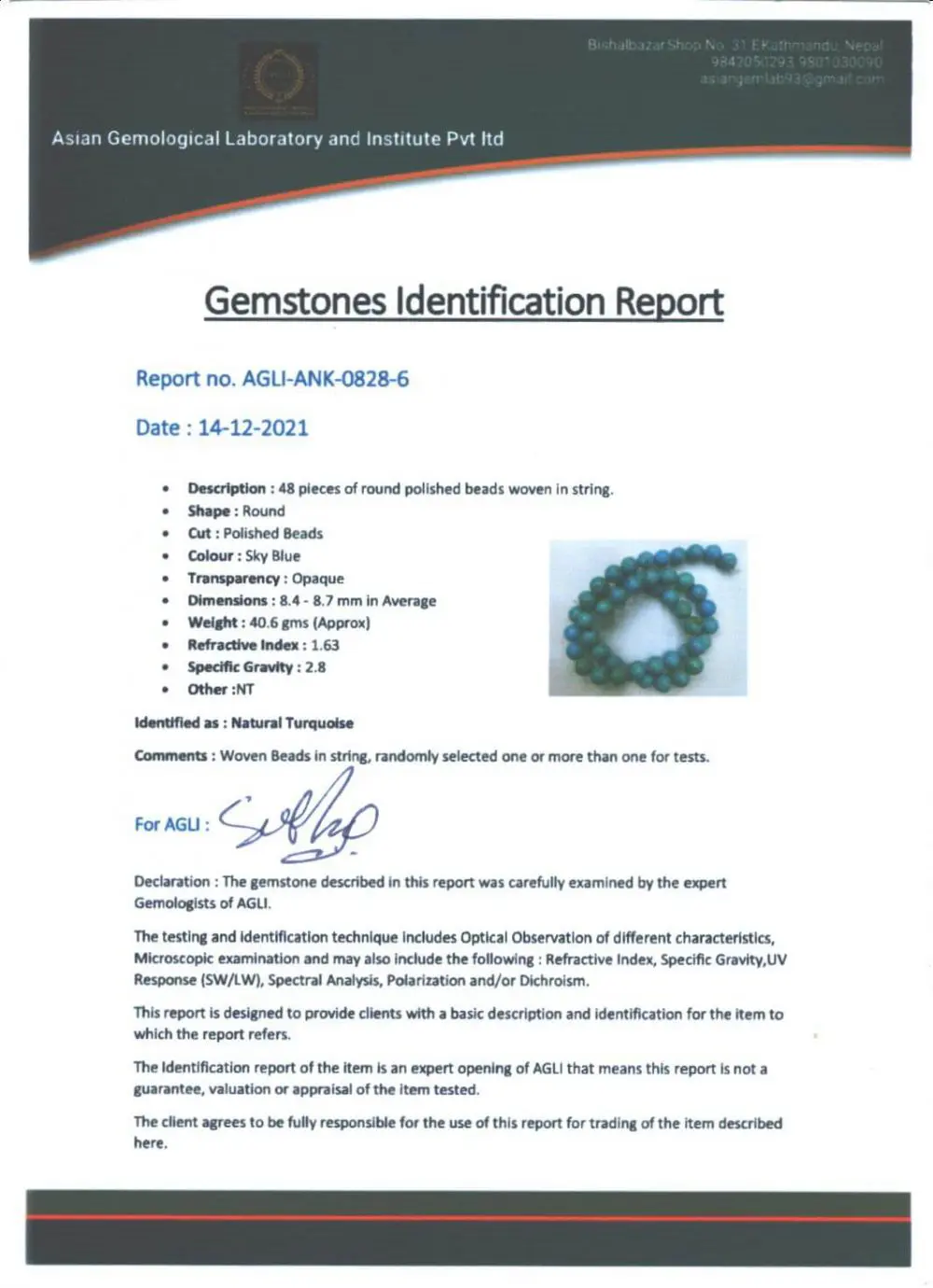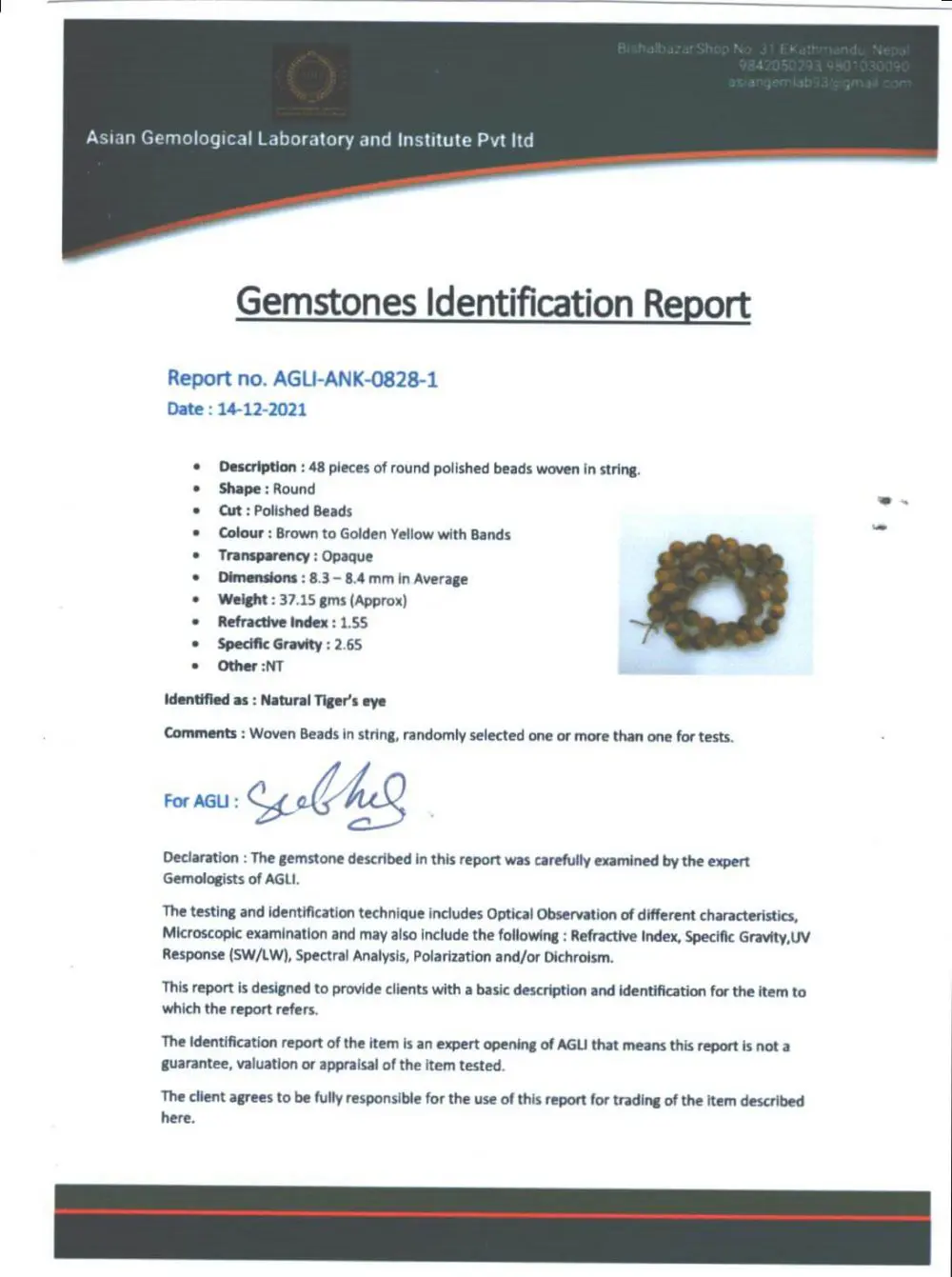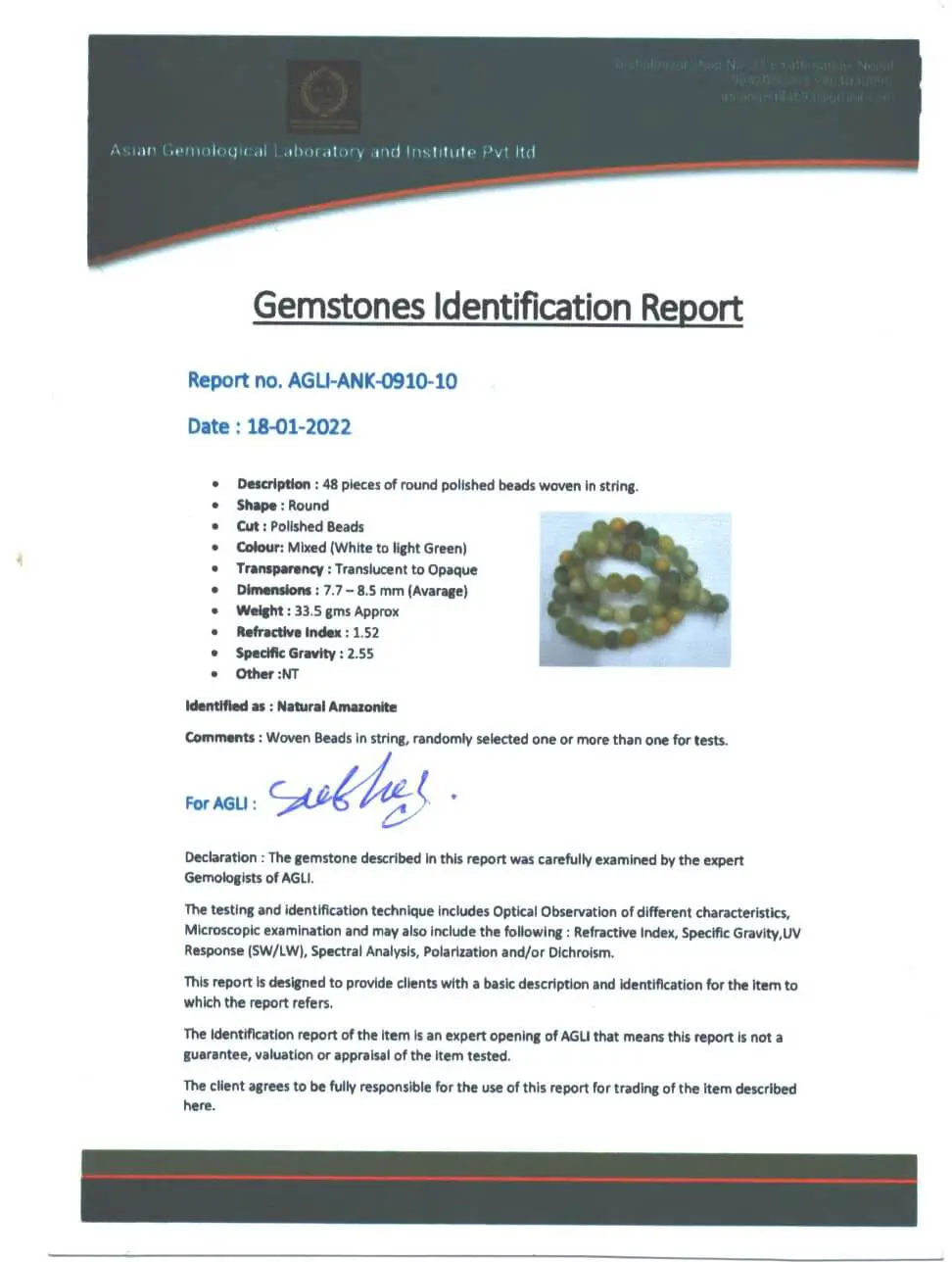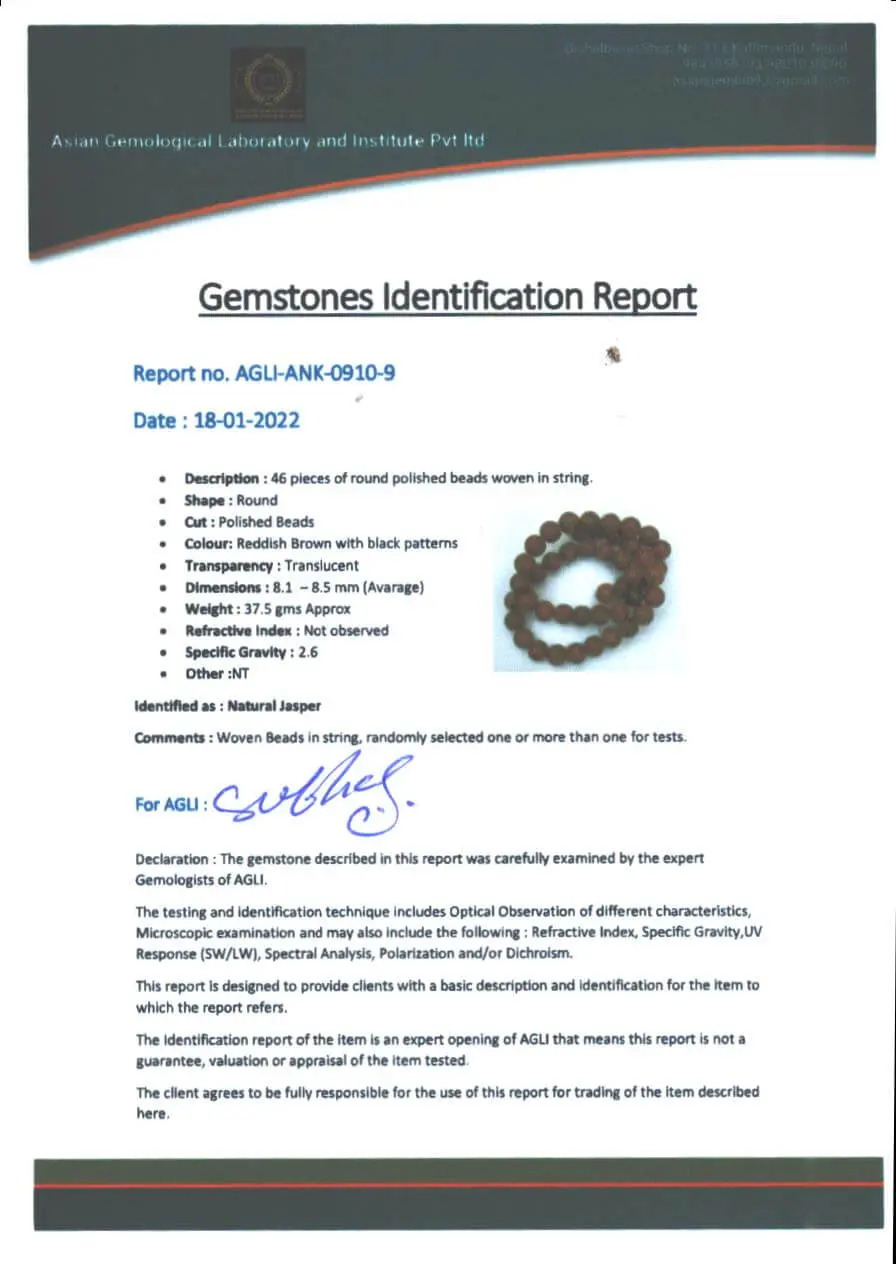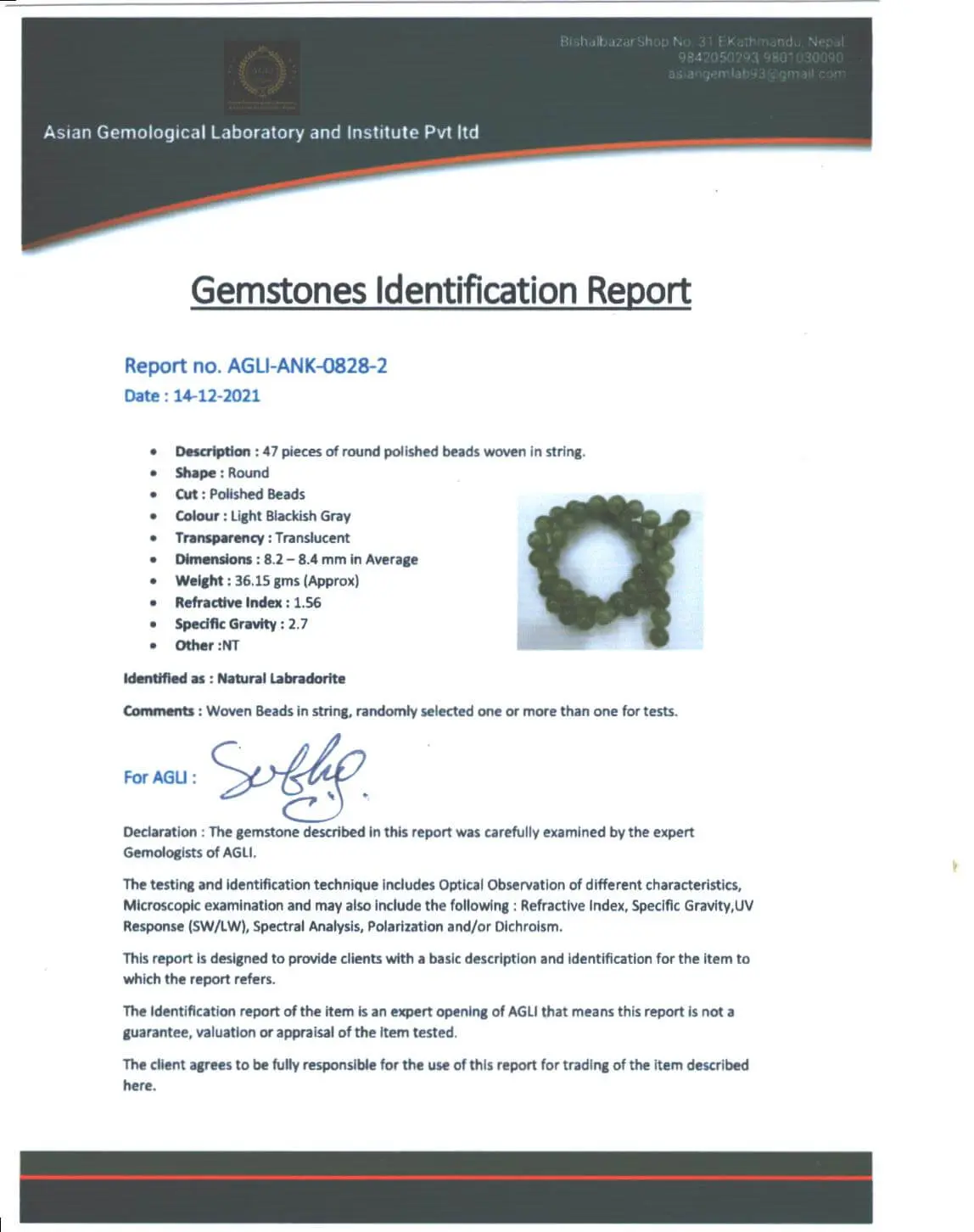Gemstones: High Quality (Natural) and Medium Quality (Real)
“Natural” and “Real” sound similar to us, but they are not. Natural means anything derived from nature, while real means anything that is not imagined or virtual. Everything we call “Natural” is real; not all real things are natural. We can clearly see this in the content of Gemstones.
Natural Gemstones are the ones found in nature without human intervention. But not all Gemstones are natural; there are synthetic ones as well. Synthetic Gemstones are the ones that are manufactured in the Labs through complicated processes, and synthetic Gemstones are just as “real” as the natural ones.

If we look at the chemical composition of both Natural and Synthetic Gemstones, they are essentially no differences at their core. As per the "Eye Witness Handbook," synthetic gems have virtually the same chemical composition and crystal structure as their natural counterpart.
Do you know? Synthetic gemstones were discovered in the 1800s and have become famous since then. And some Natural gemstones are heated to make the color more vivid. This small trivia further adds to the fact that regardless of how similar the structure of synthetic gemstones is, they are comparatively younger than natural gemstones of the same type.
That said, there is a general rule of thumb that all Natural Gemstones are of a high grade. The reason for this is rather simple – they get embued with energies from the world and their environment without human intervention. Along with this, every natural gemstone has its own uniqueness as well.
Similarly, all synthetic gemstones are considered medium-grade gemstones. This is because human intervention causes a bit of disturbance in the embodiment of energies.
At Nirvana Mala, we provide you with natural and Synthetic Gemstones of the highest quality within their grade. If you need quality assurance for the best gemstones, we even provide you with quality assurance certificates together with your gemstones.
Sample Laboratory Certificates Of Gemstones

















How do you differentiate between High Quality (Natural) and Medium Quality (Synthetic) Gemstones?
After knowing there are natural and synthetic gemstones, it is natural to want to know how to differentiate between natural and synthetic gemstones. But the only issue is that both natural and synthetic gemstones look essentially the same to an untrained eye. They do have the same chemical composition and crystal structure, after all. This is also the key reason why it is extremely hard to differentiate between high-quality and medium-quality gemstones as high-quality gemstones are Natural gemstones and medium-quality ones are synthetic.
That said, there are a few ways how we can easily differentiate between high-quality (natural) gemstones and medium-quality (synthetic) gemstones.
Some tips for differentiating between High-quality and Medium-quality gemstones.
Temperature
Although not always accurate, you can separate Natural gemstones from artificial ones by measuring their temperatures. When you simultaneously compare the temperature of both natural and synthetic gemstones, the natural ones will feel relatively cooler.
This principle can be applied while differentiating between high-quality and medium-quality gemstones as well. The reason behind this is the heat retention capacity of gemstones. The lower their quality, the more heat they retain. As such, medium-grade gemstones tend to be slightly warmer than high-grade ones.
Weight
This might come off as a bit weird since both high-quality and medium-quality gemstones are essentially the same chemically. If they are essentially the same, how can we use weight to determine the quality? The reason is rather simple – high-grade (natural) gemstones are more than crystals and have a lot of minerals mixed with them from their surroundings, adding to the gemstones’ overall weight. Meanwhile, synthetic or medium quality gemstones have nothing in them besides their chemical composition. Although it is hard to differentiate if you weigh by hand, we use the weighing machine and measure two gemstones of the same size, you can easily do it.
Clarity
Checking for clarity is one of the easiest methods to differentiate between natural and synthetic gemstones. Synthetic gemstones are made in carefully controlled labs with essentially nothing to disturb their creation. Because of this, synthetic gemstones are extremely clear. On the other hand, there are a lot of disturbances in nature during the formation of natural gemstones. As such natural gemstones are not clear with unique patterns embedded in them.
That said, when it comes to quality, the quality is inversely proportional to the clarity. This is because the fewer humans intervene in the creation of gemstones, the better their quality. As the creation of medium quality gemstones is started by human with intervention every now and then, their quality is reduced to some extent.
Color
The disturbances in nature affect more than the clarity of the Gemstones; it also affects the color of gemstones. The gemstones found in nature are slightly dull compared to synthetic ones. When it comes to the quality of the gemstones, if the color seems too good to be true, it usually is. The brighter and more vibrant the color, the more artificial it is and the lesser its quality. At the same time, if a high-quality gemstone looks and feels good but still looks natural – which they are!
If you have any queries, feel free to contact us:
Email: [email protected]
WhatsApp: +977-9803862811
Examples of Natural and Synthetic Gemstones
By reading the tips above, you might have gotten some ideas on how to differentiate between natural and synthetic gemstones. Now, let’s take a look at some examples to make it even clearer.
1) Amethyst Stone
Although we cannot see the temperature and weight of the two types of Amethyst gemstones from the images, we can see the colour and clarity. From the above images, we can see that the natural amethyst has patches of blurs while the synthetic version is clear without any flaws. In the same vein of thoughts, the color of synthetic is extremely vibrant as well, although there can be variations within the clarity and .
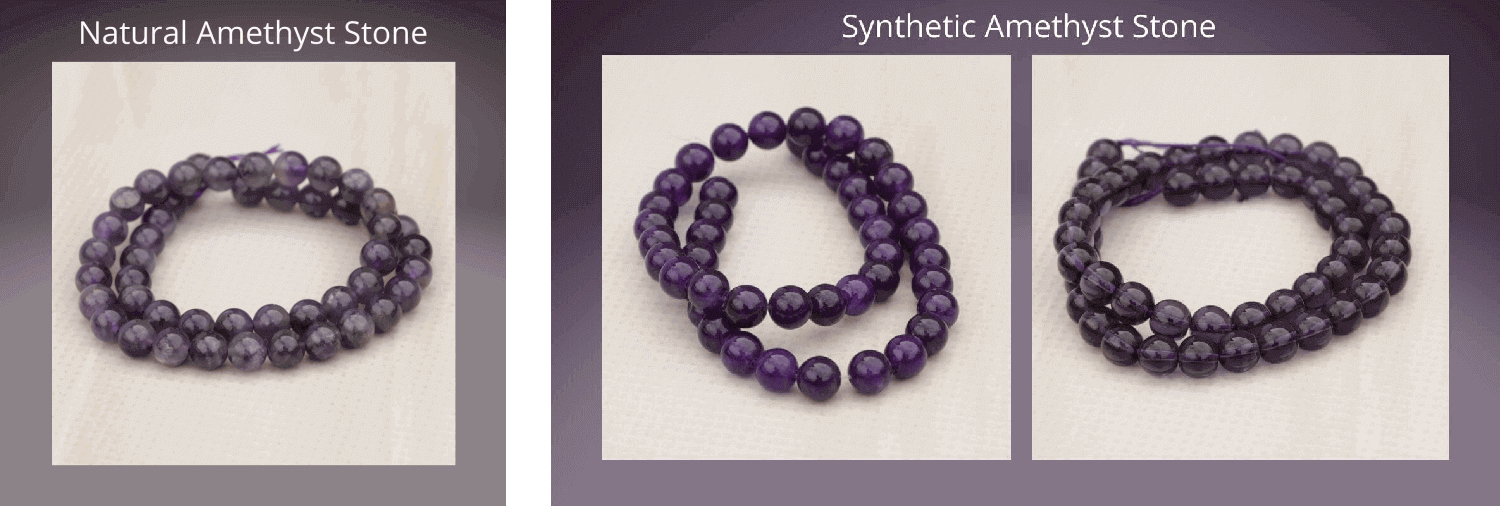
2) Citrine Stone
While colour and clarity are one way to differentiate between natural and synthetic gemstones, another method is the uniformity of the patterns and colours. This can be seen in the Citrine gemstone. While natural citrine stone is indeed clearer than synthetic ones, they also have irregular patterns within them and the colour is more muted as well. On the other hand, the colour of the synthetic version is more defined without any flaws (patterns).
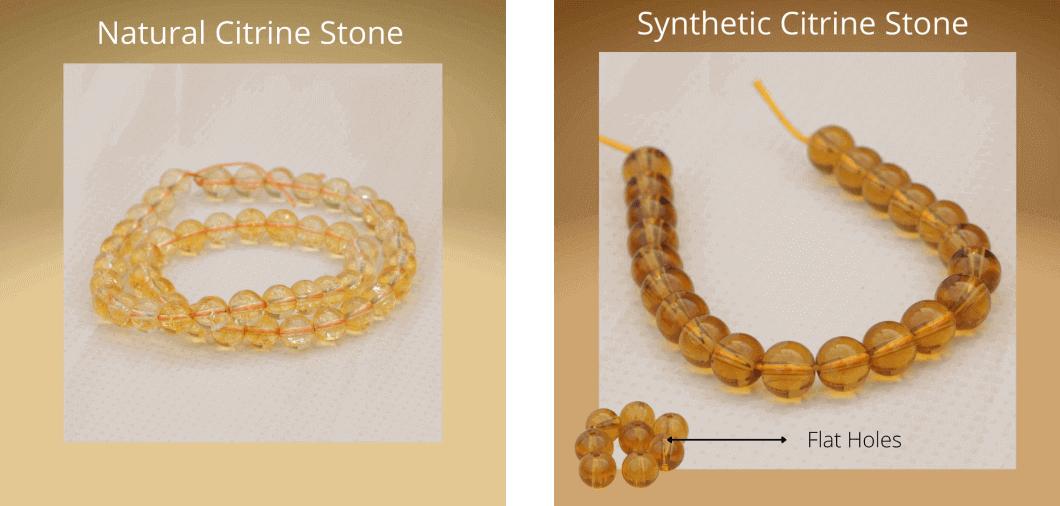
3) Jade Stone
Jade is one of those gemstones where you will need to look at multiple signs to differentiate between natural(High quality) and synthetic (medium quality) gemstones. With Jadestone, you will need to look at both the colour and clarity of the gemstone. There are synthetic Jadestone with a bit of muted colours and vibrant colours. However, when the synthetic Jadestone’s perfectly uniform and without any debris within. Natural gemstones are both muted in colour and have some blurry textures within.

4) Lapis Lazuli Stone
Lapis Lazuli falls into the same vein as Jade stone. You can find synthetic (medium quality) lapis lazuli stone in both vibrant and muted colours. Furthermore, Laips is known for the patterns within them. As such, you will need to check for both purity (clarity) and colour when differentiating between natural (high quality) and synthetic Lapsi lazuli. The natural lapis lazuli Stone will have irregularities within their pattern, muted colour and impurities.
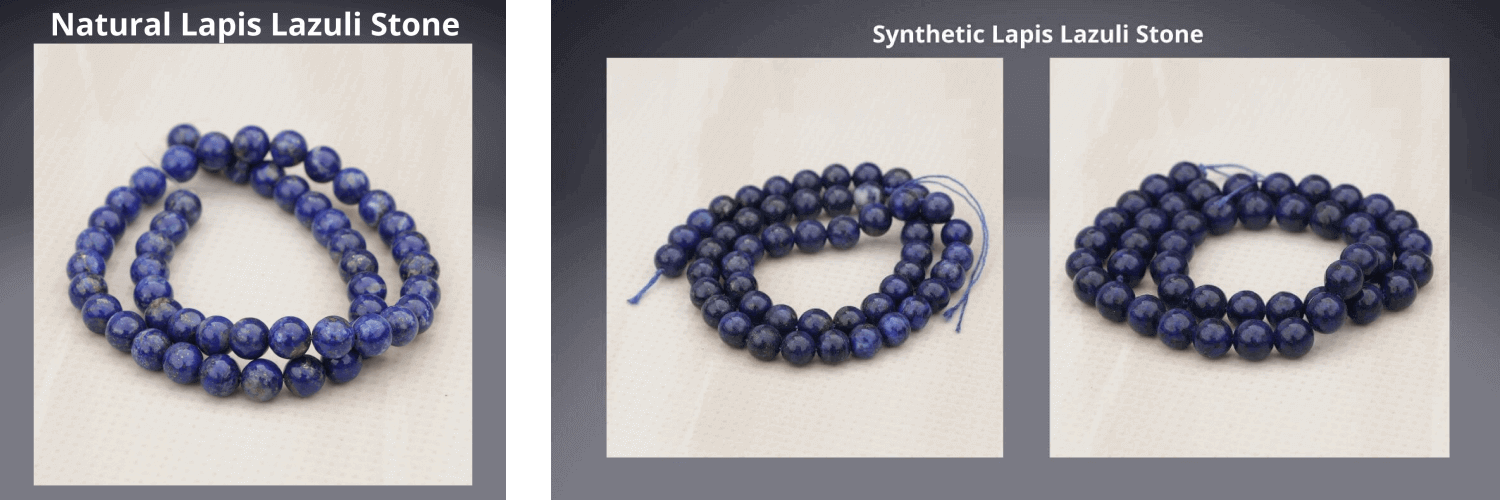
5) Tiger Eye Stone
When differentiating between the natural and synthetic Tiger eye, you should look for uniformity of patterns. Tiger eye is a popular gemstone because of its ring-like pattern. However, nature is not uniform and because of this, the ring patterns in natural tiger eye beads tend to be misaligned and randomly distributed. Furthermore, the colour of natural tiger eye beads is a bit muted.
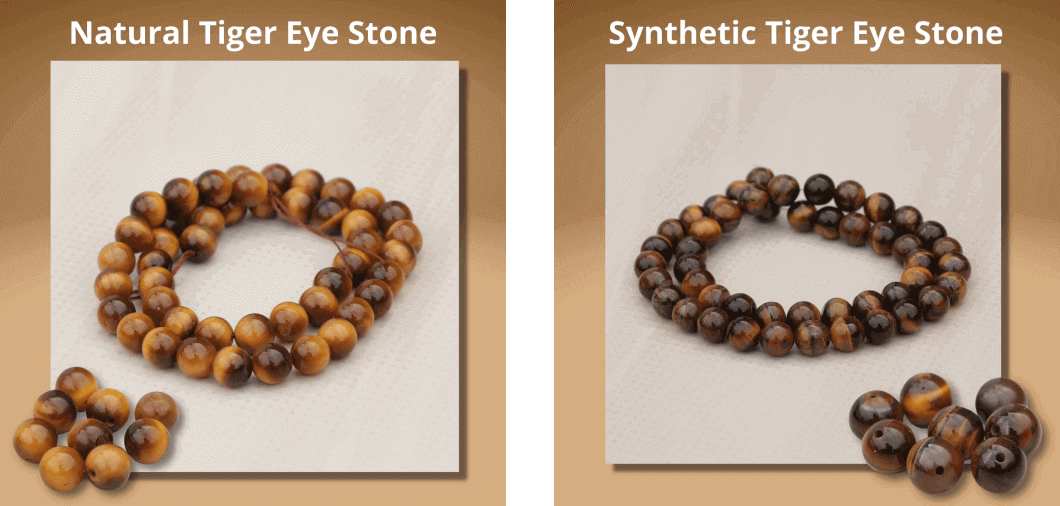
6) Turquoise Stone
It is a bit hard to differentiate between natural and synthetic turquoise. As there are variations of both natural and synthetic turquoise stones that are muted in colours. That said, to differentiate between the natural and synthetic versions of this stone, you will need to look at its patterns as the patterns of natural turquoise are not well-defined when compared to the synthetic ones. Furthermore, when compared side by side, along with the pattern, the colour of the natural Turquoise stone is comparatively more muted.


You might be contemplating the variety of gemstones that Nirvana Mala sells? We have added two variations on every gemstone product, i.e., High quality and Medium Quality. High quality represents natural, and Medium means Synthetic gemstone. Our High-Quality gems are certified and we provide the certificates together if you need them. The technology for testing the Lava stone isn’t established in Nepal yet so we don’t provide the certificate for Lava stone products.
Do you know? Synthetic gemstones were discovered in the 1800s, and they have become famous since then. And some Natural gemstones are heated to make the color more vivid.
Here are some tips for discriminating between Natural & Synthetic gemstones.
- Synthetic gemstones are more likely to be rich and vivid in color and are virtually inclusion or blemish-free when you look at them. Almost always, natural gemstones will have some type of inclusion or color differentiation.
- Natural gemstones are colder than synthetic when touched.
- Natural gemstones are heavier than synthetic ones.
- Authentic gems should be slightly imperfect. There should be some color zoning and the shade should have tones of white or blue in addition to purple.
Feel free to contact us:
Email: [email protected]
WhatsApp: +977-9803862811

